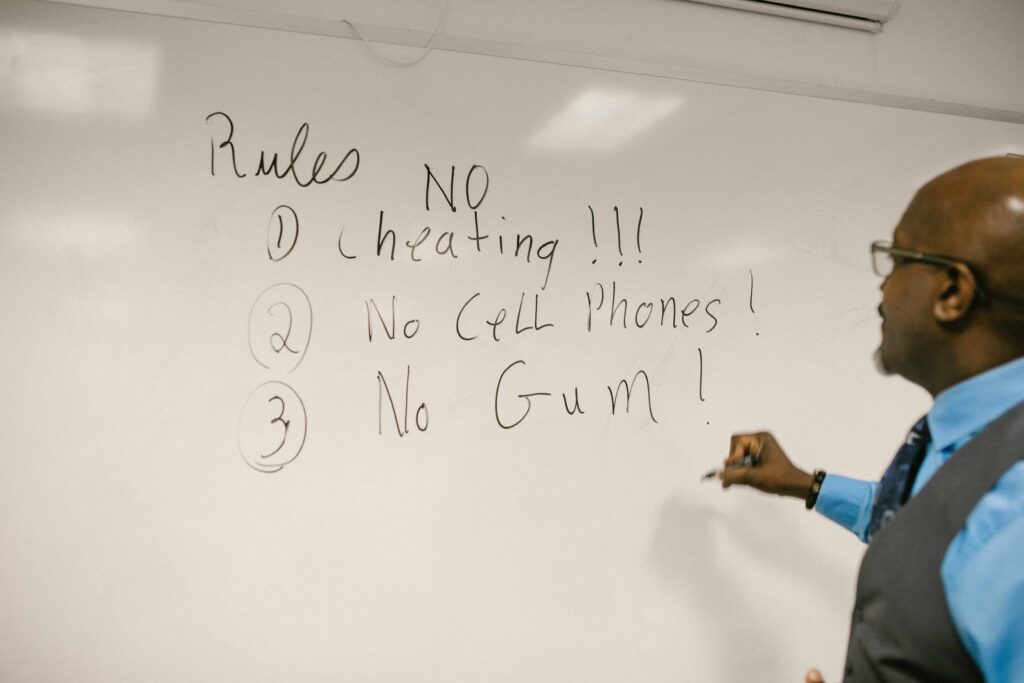Large classes are a reality for many educators who teach at schools and higher education institutions worldwide. Teaching large classes can be challenging, as such environments are commonly believed to be less conducive to delivering a meaningful learning experience than smaller class sizes. Additionally, large classes can make it more difficult for students to gain knowledge and develop critical thinking skills. Yet, teaching large classes is not impossible, especially when effective techniques are employed.
Challenges Associated with Large Class Management
There is a long-standing hypothesis regarding the impact of the number of students in a class on the lesson quality. According to one study, class size is inversely related to the quality of learning and pupils’ achievement. In other words, the larger the class, the worse off the students and the learning process will be. This study found that in smaller classes, pupils are more engaged and have a better relationship with their teachers. They are also more likely to receive individual attention, allowing for a more effective learning experience.
Moreover, large classes tend to be more teacher-centered and have a more didactic approach. In such an environment, it is more difficult for students to engage in learning actively. If this was seen as an effective method in the past, recent research has shown that active learning is a more successful approach in promoting deep understanding and long-term retention of information.
Furthermore, many teachers face difficulties while managing student behavior in large classrooms. Some of the most common problems are noisy pupils, low motivation levels, disruptive behavior, and lack of discipline. To deal with the matter efficiently, teachers need to implement classroom management strategies that work best for them and are appropriate for the class size.
Potential Solutions to Teaching Large Classes
While keeping large numbers of students under control still may seem daunting, there are many large-class teaching techniques that can help make the experience more manageable and less stressful. These methods include dividing students into small groups, using technology to your advantage, and creating an interactive learning environment. Try implementing the tips below to deliver a meaningful learning experience to your students and help them develop a love for the subject you’re teaching!
Let’s look at the five most commonly used approaches:
Establish Classroom Rules

One of the first things a teacher needs to do when teaching a large class is to establish rules and expectations. Make sure your students know what is expected of them regarding behavior and work ethic. Establish clear rules and procedures from the beginning of the semester to avoid any confusion later on.
It is also essential that you enforce these rules regularly. Consistency is the key to maintaining order in the classroom.
Maintain a Positive Mood

Tension-free classrooms are more productive than those with a negative atmosphere. If a teacher feels stressed or annoyed, the students will always sense it and may start to react. Therefore, it is crucial to remain calm and patient, no matter what the circumstances may be.
Try to lighten the mood by cracking or telling funny stories about the subject at hand. A positive attitude will encourage the students to stay engaged and motivated throughout the class. As a teacher, always try to create a relaxed and motivating atmosphere in the classroom.
Hire Teaching Assistants

Many higher education institutions hire Teaching Assistants (TAs) to help manage teaching large classes. TAs can take attendance, help with grading, and even teach some of the lessons. Opting for a teaching assistant’s help from time to time may take the workload off your shoulders and give you more time to focus on delivering a quality lesson.
Use Visual Aids
Visual aids are an excellent way to keep students engaged, especially in large classes. Teaching with presentation tools like PowerPoint, for example, has been a good strategy to present the material in a new light. However, due to technological advances, this approach has become outdated.
Nowadays, there are many interactive software tools that can be used to create engaging multimedia presentations. These tools help teachers take their classes to a new high level, leaving behind the old-fashioned presentations.
For instance, a digital collaborative whiteboard does miracles for a large class. It allows students to work on projects together and see each other’s contributions in real time.
The market is rich with options, but LiveBoard is among the best platforms available today. Not only does it offer real-time collaboration between participants, but it also provides the teacher with all the necessary features like graphs, formulas, and more. Interactive whiteboards are among the best teaching strategies for large classes.
Assign Group Projects
Group projects are excellent when it comes to keeping students motivated and enthusiastic. Students who work together on a project are more likely to stay engaged and interested in the material. Moreover, group projects promote team-building skills and allow students to compete with each other in a healthy way. Implement cooperative learning strategies to help students work together as a team.
Large classrooms can also be managed with other strategies and techniques. What’s most important is to find what works best for you and your students. Test different methods until you find the perfect fit for your class. Teaching large classes does not have to be a challenge. With the right strategies in place, you can make it an enjoyable and rewarding experience for you and your students.


